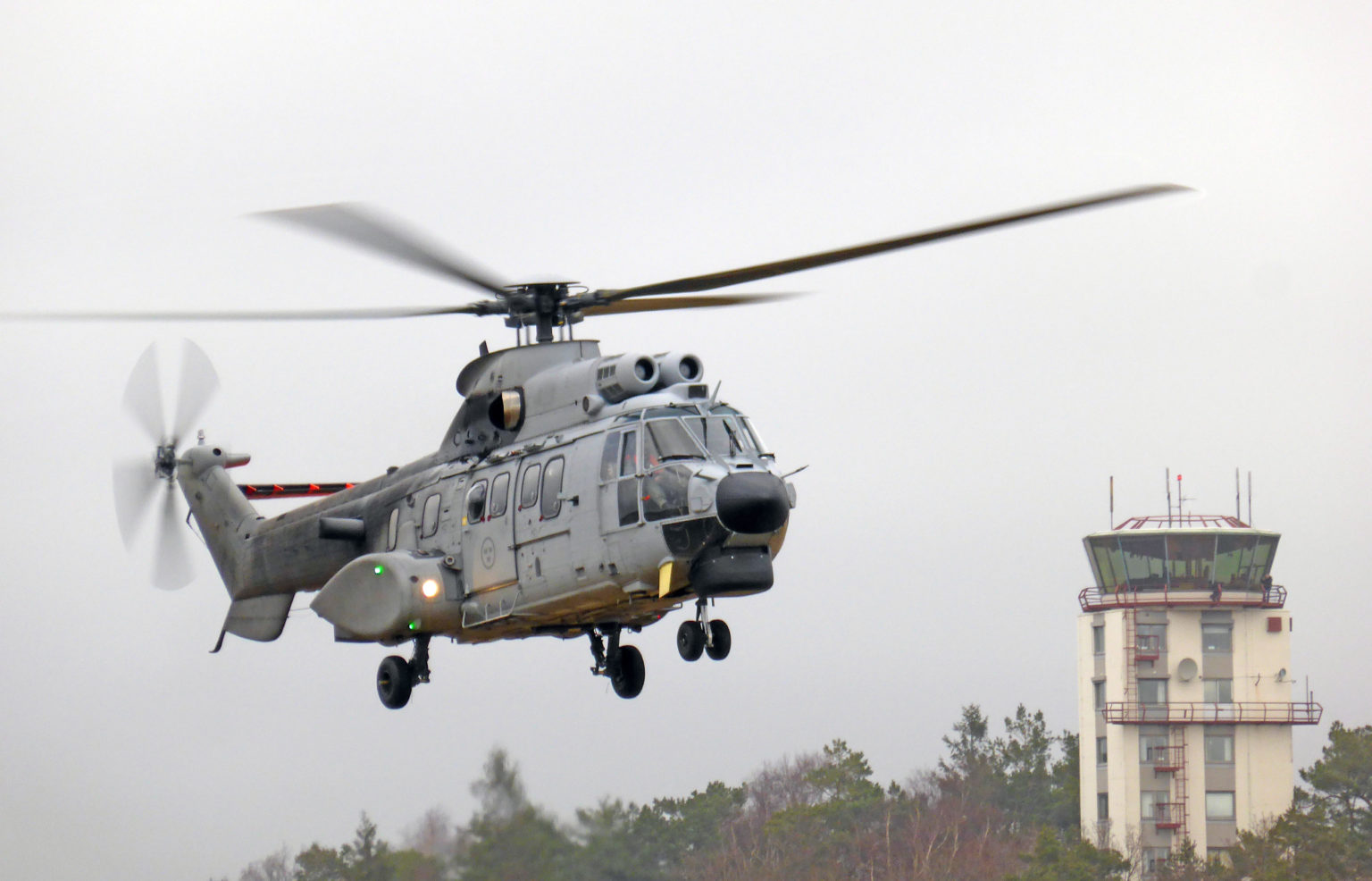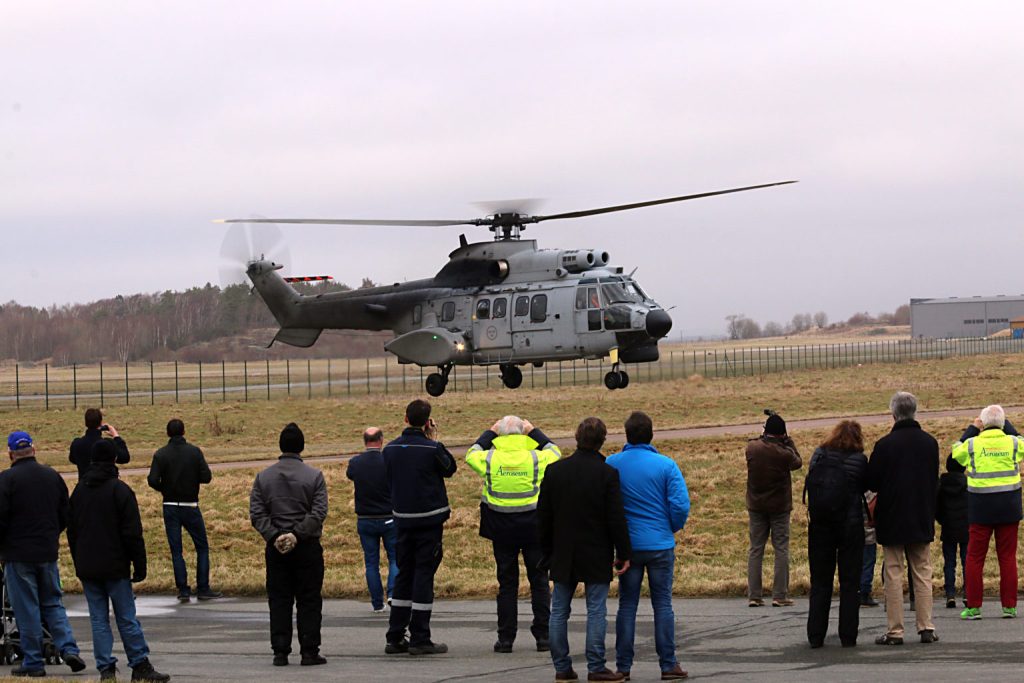MEDEVAC in Afghanistan
With Sweden agreeing to take part in the international force that was trying to stabilise Afghanistan, Swedish soldiers found themselves fighting against various rebel groups and clans in the areas of the country assigned to them. Swedish troops were being killed and wounded, and it was becoming obvious that their contribution in Afghanistan was more dangerous than many had perhaps hoped. There was a clear need to be able to evacuate wounded personnel. Initially the plan was to send a unit with twin rotor Type 4 helicopters, which had already been prepared for this type of task, and even equipped with the capability of being armed with machine guns for self-defence.
Internationally the concept was called MEDEVAC (Medical Evacuation) and meant that for this purpose helicopters or other vehicles would be equipped to pick up wounded near to or just behind the battle zone. One must differentiate this from the similar concept of CASEVAC (Casualty Evacuation). CASEVAC could utilise any kind of vehicle, helicopter, armoured vehicle or even motor cycle temporarily commandeered to evacuate personnel from the battle zone, often to a collection area from which MEDEVAC could collect the wounded for onward transport.
Using helicopters to transport the wounded to areas such as field hospitals was one of the first tasks in which helicopters made a name for themselves. This breakthrough came during the Korean War in the 1950s when American Bell 47 helicopters with stretchers attached to each side flew wounded soldiers from the front to field hospitals. This was the beginning of the concepts of CASEVAC and MEDEVAC. Despite this relatively primitive method of transport, with casualties lying on stretchers outside (!) the cabin, it was a vital service and many lives were saved that would otherwise have been lost.

H96 arrives at the Aeroseum after its definitive final flight in 2015.
Type10B helicopters
However, at the same time as the forces went to Afghanistan, it was planned to take the faithful twin rotor Type 4 helicopter out of service. It now became the turn of the Type 10 to go to war. Two modified machines, one being H96 “Ida”, today in the Aeroseum, were designated Type 10B and were the first Swedish–operated helicopters to enter a war zone. For vehicles of various types to be given nicknames in the military is not too common in Sweden. Ida received her name after the new-born daughter of one of the mechanics. When this helicopter was once located in Bergen, Norway, the mechanic could not be present at the birth of his daughter, which of course made him unhappy. His colleagues then christened H96 “Ida” as a small compensation.
The two Type 10B helicopters were equipped with additional ballistic protection against splinters and ground fire. The engines were provided with additional heat shielding for defence against heat-seeking anti-aircraft missiles. A warning system and countermeasures in the form of flares could be actively used to mislead missiles and protect the helicopters. In addition the helicopters were equipped with machine guns for self-defence and the windows equipped with firing apertures through which the crew and passengers could use their hand-held weapons to assist in defence.
Furthermore, it was also necessary to ensure protection for the engines from dust and other particles in the dry climate, and so special particle separators were installed in the air intakes.
In the front line
In April 2011 the unit was in position and could begin to perform its duties. The tasking profile had by then been specified as “Tactical MEDEVAC”. This meant that the helicopters carried out planned flights whereby the injured were picked up from primitive collection centres for the wounded close to the battle front, and taken to larger and better equipped installations. This may sound relatively safe, but in Afghanistan nothing could be said to be completely secure. As already mentioned, it was in particular ambulance helicopters and other transportation helicopters that were attractive targets, for both the Taliban and other enemy groups. Those helicopters flew in fairly predictable profiles and routes, and were therefore more liable to be ambushed.
Afghanistan is a dangerous place for helicopters. During the Soviet occupation of Afghanistan in the 1980s helicopters were of great importance for being able to move armed forces around in the mountainous terrain, transport necessities to isolated outposts and be able to carry out surprise attacks on the Afghan guerillas. They therefore became important targets for the guerillas and over time provided them with great experience in fighting against helicopters. When the USA secretly smuggled in portable Stinger type anti-aircraft missiles, these had great importance, as they considerably increased the risk to Soviet helicopters.
These missiles, as with other portable systems, including those from Russia, were present in an undefined area. Because of this it was not possible to send randomly selected helicopters, they would have to be equipped for the task of operating in an area in which the enemy could appear from almost anywhere. Also, transport and ambulance helicopters were more likely to be targeted than heavily armed attack helicopters.
These factors are not really limited to Afghanistan, but have come into play time after time in the relatively short history of military helicopters. Let us begin with a comparison between the appearance and experience of armoured helicopters in Lebanon in 1982 as related in the text for the Swedish Type 9 helicopter. Despite the light Gazelle and MD 500 helicopters lacking any protection to speak of, and being in principle light helicopters carrying only armour-piercing missiles, given a military task they managed surprisingly well. They could use their speed to remain hidden, had the advantage almost always of being able to choose their time, location and angle of attack, and often could identify the enemy before their own presence was detected. These advantages made them difficult targets as it was always very difficult to predict when, where and from where they could appear. In addition, they could keep moving both before and after the moment of firing, and sometimes whilst firing, and moving towards the enemy. A moving target is always more difficult to hit.
A sitting duck
Of course a helicopter that is to deliver or pick up any kind of load must either land or hover stationary. That is the moment when it would be particularly vulnerable to being shot at from almost any kind of weapon, including grenade throwers and bazookas that are really meant for attacking bunkers and armoured vehicles. To some extent a transport helicopter can vary its precise landing location, as long as it isn’t a regular delivery to a fixed point. However a MEDEVAC helicopter is tied to the place where the wounded are assembled, and it is of course much more difficult to relocate a collection point for the wounded. If an enemy finds out where such a location is, it can organise an attack close by and then lie in wait. One method is to attack nearby and cause a few casualties that must be evacuated, by means of some kind of wounded transport. Then it is just a matter of lying in wait for that casualty transport to appear.
Already during the Vietnam War medical helicopters were exposed to great danger because of such factors. Over and above that is a psychological dimension whereby successful attacks against medical transport in particular have a demoralising effect on those exposed, who now must be even more worried about being themselves wounded, and their patients suffering even more. It does not help that there are many agreements and conventions intended to protect medical staff and casualty transportation from attack. In many cases one or both antagonists choose to ignore such measures, thinking instead of the advantages that particularly the weaker party gains by causing losses to the other party without much risk to their own side.
If the answer turns out to be providing an escort to MEDEVAC flights and transports, this ties up resources that could otherwise be employed to fight against the opponent, which in turn gets the possibility to attack targets that are now weakened and that have important strategic and tactical value. In addition, helicopters providing escort to MEDEVAC are at greater risk as they also are forced to act more predictably. Even a heavily armed attack helicopter is easier to oppose if it is obliged to act predictably instead of being able to choose its own time and place for battle.
SAE ISAF MEDEVAC
The units established in Afghanistan were called SAE (Swedish Air Element) ISAF (International Security Assistance Force) MEDEVAC Hkp10 and were based at Camp Gustav. This camp had been set up some years earlier and started out as a ”gravel square” that had been assigned to Sweden by the German area commander. Experience in Afghanistan became very instructive for this unit, which had started out with very limited knowledge. The Type 10 proved to be up to the job and during the period it operated in Afghanistan performed 82 missions, for a total of 600 flying hours.
New experiences and learning were snapped up relatively quickly and adaptation took place relatively friction-free. Gradually the camp became shared with a transport unit, and for several months in 2012 their C-130 Hercules aircraft carried out hectic activity in the area. However the clock was ticking and there were plans to replace the Type 10 helicopter. But with what?
It had been thought that both the Type 4 and the Type 10 would be replaced by the Type 14 (modified NH90), but this helicopter was expected to suffer considerable delay, thus creating a vacuum in the Swedish Defence Force’s helicopter strength. Something had to be done, and as a result there came about one of the fastest procurements ever for Swedish defence. Now there were resources and also a desire from the political leadership to rapidly find a replacement. The choice fell upon a machine that many inside the defence helicopter establishment wished could have been procured earlier, namely the well-proven American UH-60 Blackhawk M. These helicopters were procured in record time, mainly to replace the Type 10, and received the Swedish designation Type 16. Whilst the Type 10 had been basically a civilian helicopter, adapted to suit ever more demanding military tasks, the Blackhawk had been designed from the start as a military helicopter. It went into service straight away in Afghanistan.
The final Type 10 assignment in Afghanistan took place in March 2013. The new Type 16 had arrived and would now take on more advanced tasks in the form of Forward MEDEVAC, whereby the wounded would be picked up directly behind the front line. All that remained for the Type 10 was to return to Sweden and be disarmed. Time was running out. As with the withdrawal of the Type 4, there were many who considered that it was all too soon, but the decision had been made and would be implemented.
So at the end of 2015 came “Ida’s” final task. The helicopter took off and flew to Gothenburg and Säve airport next to the Aeroseum. When she had landed for the last time she was rolled into the underground hangar, probably never to see daylight again. But she will remain a part of history, carrying both joy and sorrow, on behalf of the Swedish Air Force Air Rescue Group (FRÄD) operations and representing the Swedish contribution in Afghanistan.

H96 “Ida” mere seconds away from making her very final touchdown. Photo Peter Langsdale.
The last word goes to Mats Ådemos, flight technician in the First helicopter squadron, who was cited in the Swedish Defence Forces’ own blog in connection with the withdrawal of the Type 10 in 2015.
